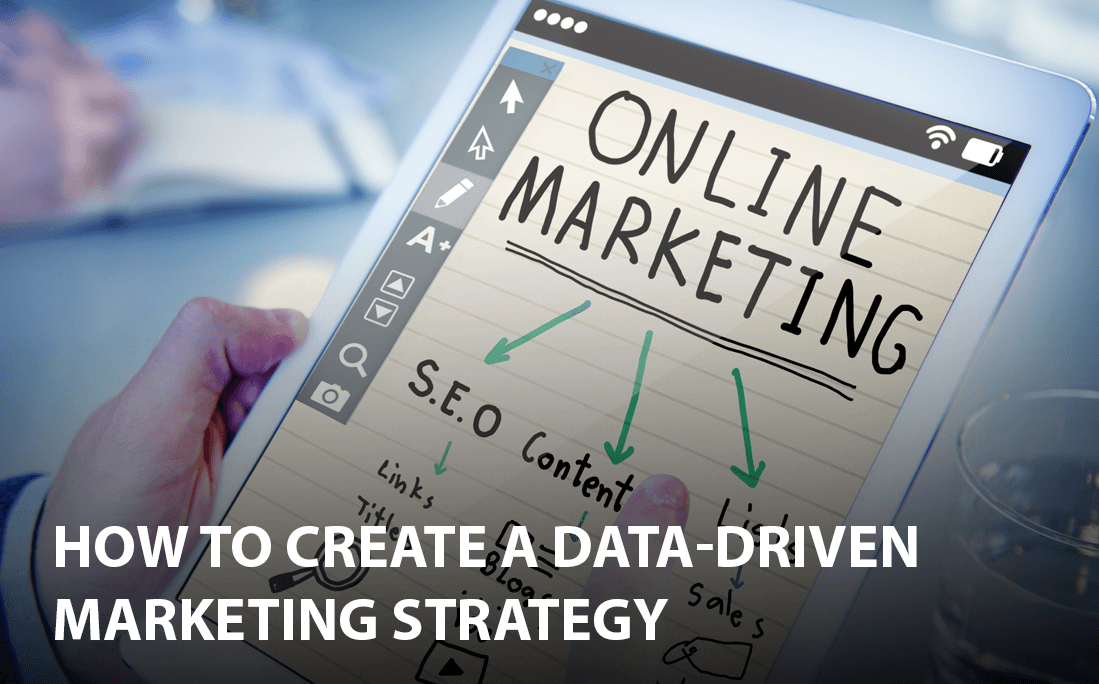
How to create a data-driven marketing strategy
Many online marketing campaigns are aimed only at the quick lead or sell off – and thus give away growth potential. In this article, I’ll explain how you can build a holistic online marketing strategy and unlock the full potential of your campaigns. The basis of this is data-driven marketing.
You’ve probably already stumbled upon the term data-driven marketing. As a basic definition data-driven marketing is about making decisions based on solid data from your past or current marketing activities. Many marketers today, like to take this approach to marketing, as it focuses on the user and promotes interaction between marketing channels (anti-silo thinking!) And thus provides the basis for a successful online marketing campaign. A strategy that delivers.
Many online marketing campaigns focus only on the lower part of the funnel of the customer journey. They reach the users who are already ready to buy and “ignore” all potential customers who are not actively thinking about making a purchase – here is the unused potential.
The group of users who want to buy now is relatively small. On the other hand, looking at the group of users who qualify as customers holds greater growth potential. Our goal should be to get into the “relevant set” of these users. When we achieve this, these users think of our product or service when they are ready to buy. But how do we make it into the “relevant set” of users? And how can we best accompany users on their customer journey? Data-driven marketing is the key here.
The Basics of Data-Driven Marketing
1. Create foundations
Before you think about the right channels, campaign types or messages, you need the basics: the status quo, the product, the target audience (personas can be very helpful) and the competition. I highly recommend that you don’t rush on the foundations, such as creating a buyer persona and researching your current target market. Knowing your audience and having information, such as their interests, demographics and so on is highly important.
2. SMART Goals and KPI’s to help you measure.
Of course, the goals must not be missing. What are your marketing goals? And are these goals SMART (specific, measurable, executable, realistic and timed) chosen? Without goals, you have nothing to aim for or nothing to measure against. If you are fairly new to measuring your marketing activity, I suggest using industry standard figures (which you can find on the internet) to help you create goals.
3. Clean Tracking of your activities
To analyze the customer journey and to measure the success of the measures, you need well-founded figures, and you can get them with a clean tracking setup. All marketing team members must agree on a common data collection database or spreadsheet layout to use track their goals or KPI’s weekly or monthly. And each marketing channel must not be considered independently of each other but in interaction. For example, the data of all channels (Google Search, Bing Search, Facebook Ads, SEO, etc.) should flow into one report – as a “collection point”. Your report should show you at a glance what is going well and what needs improving in all areas of your online marketing.
4. Attribution – who is involved in the success?
Far too often, the success of online marketing channels is still rated on the basis of the last click. The last channel right before conversion completion gets 100% of the success attributed. The channels work much more like a football team: The team prepares and one shoots the gate. Nevertheless, everyone is involved in the success. The important thing is: Move away from the “Last Click” attribution model. As a tip, the model comparison tool feature is very handy in Google Analytics for this type of reporting. It lets you see at a glance how each channel contributed to a campaign’s or goal’s success. I suggest you take a look at first interaction and compare it with the last non-direct click model to see the differences and trends.
That’s the basics done. Next, I suggest you make sure to list all the channels and measure what you are currently doing (including the offline measures, such as TV, outdoor advertising, radio, etc.). Also pay attention to the use of the corporate design (logo, colours, wording, imagery) and which messages are conveyed. This could really impact the success of your marketing campaigns.
A challenge faced by many…
In bigger companies the individual channels are often controlled by different people in companies or agencies – one only deals with social media campaigns, the other with search and display ads, then there is someone for search engine optimization and the expert for marketing automation. Not to mention, the team that looks after offline marketing, such as radio, billboards or TV commercials.
The challenge is to coordinate the measures in the individual channels. The following points can be helpful:
A large overview of all channels and measures that are in use (including offline measures, ideally assigned directly to the person responsible for keeping track of all the measures and KPIs ).
Regular voting appointments in which content is discussed (which ads are used, which content is created, which messages and images do we use, what is the wording?). This can provide all members of the team with a round overall picture of the brand and what needs to be achieved.
A common roadmap which visualizes which campaigns are active in which phase and what is being planned.
If you’ve found this interesting and want help with your marketing strategy book a 30 minute call with our marketing expert.

